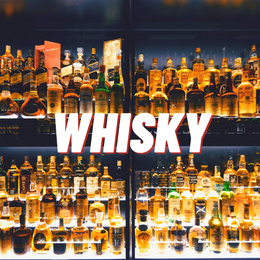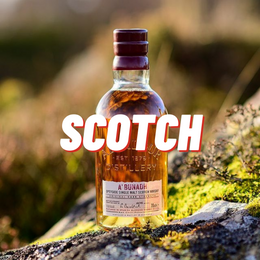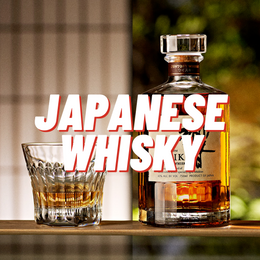
What the heck is that?
A cask is a wooden barrel that is used to mature whisky. Casks can be used to mature a wide range of other spirits beyond whiskies as well. Maturation is key to the making of alcoholic spirits as it allows the alcohol to simmer down and take on deeper flavors as some of the alcohol is evaporated away and allows the alcohol to take on flavors from the wooden barrel as well. It is key to creating a rich, flavorsome and harmonious spirit. Casks play a huge role in enabling maturation to happen when whisky is filled and stored inside them for a period of time.
Who cares?

The type of cask used to mature a whisky will affect the flavors of a whisky in a number of ways. We'll cover some of the main ways below (non-exhaustively).
There are two main factors: 1. Intensity of Cask Influence, and 2. Flavors From Cask.
1. Intensity of Cask Influence
This is affected by the number of times a cask has been reused and the size of the cask.
Generally, whiskies that have been matured in casks that have been reused multiple times tends to take on less influence from the cask. The larger the size of the cask, the less contact between the whisky and the cask, which means less cask influence as well. Hence, a first-fill quarter cask matured whisky would be significantly more intense in cask influence compared to a second-fill hogshead matured whisky.
That said, more intense cask influence is not always a good thing! It may result in over-oaking, where the underlying flavors of the alcohol itself (without any cask influence) is completely masked and overshadowed. Ultimately, we're looking for a good balance of cask and distillate (whisky without cask influence).

The size of the cask affects the amount of contact between cask and whisky. (Image Source: BBC)
2. Flavors From Cask
When it comes to flavors, this is primarily affected by the type of wood used to make the cask and what other alcohol was used to season the cask before whisky was filled into it, a process called seasoning.
American Oak tends to lend whiskies a softer, sweeter taste with notes of caramel and vanilla. European Oak tends to be spicier and more woody. Mizunara offers a distinctive kara flavor that is reminiscent of coconut, citrus and temple incense.

Seasoning casks involves filling casks with an alcohol and allowing its flavors to be imparted to the wood of the cask, followed by filling it with the whisky. (Image Source: Sherry Wines)
When it comes to seasoning, often times other spirits such as American Bourbon or Spanish Sherry is used to lend whiskies greater flavor dimensions. These spirits are filled in the cask for some time before being dumped out and then filled with whisky. Bourbon is known to give notes of caramel, vanilla and is highly sweet and aromatic. Sherry is known for offering whiskies a fruitcake flavor, with some baking spices and raisins or dates.
Why should I care?
When it comes to choosing whiskies and finding the flavors you like best, you'll often find tons of information on the labels but you might find it difficult to decode what they mean. A big part of the information pertains to the type of cask used to mature the whiskies.
The cask will affect the whisky's flavors depending on how many times the cask has been reused (first-fill, second-fill, etc), the wood used to make the cask (Spanish Oak, American Oak, Mizunara, etc), the size of the cask (Butt, Puncheon, Hogshead, etc) and also what was contained in the cask before the whisky was filled in it (Sherry, Bourbon, etc). Sometimes you may also see whiskies that have undergone double or even triple maturation, where the whisky is first matured in one type of cask, and later transferred to a different type of cask to continue its maturation.

An example of a whisky that was matured across two different cask types. (Image Source: Wine-Searcher)
A common example is to first mature a whisky in Bourbon barrels (casks that previously held American Bourbon) and subsequently in Sherry casks (casks that previously held Spanish Sherry), before bottling.
Ultimately, the best way to find your footing around whiskies is to try a spectrum of whiskies with different casks used and to take note of what you like most and what you like less. Try and find different distilleries who've matured their whiskies using the same casks to isolate the cask influence and you'll know if you like it or not! Subsequently you can look for interesting and unique cask-matured whiskies to further your exploration.
Remember, we're after a harmony of well-balanced flavors, not too much of any one thing!







